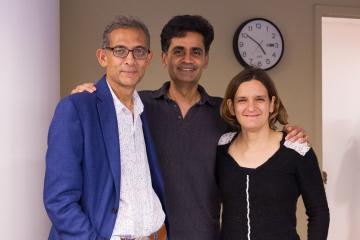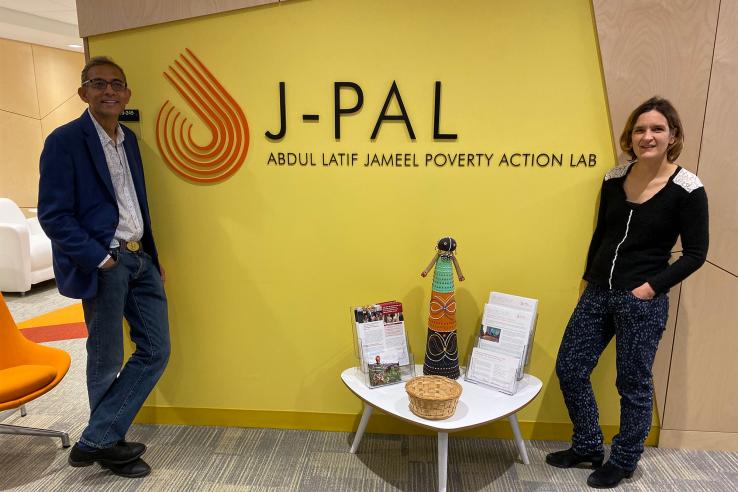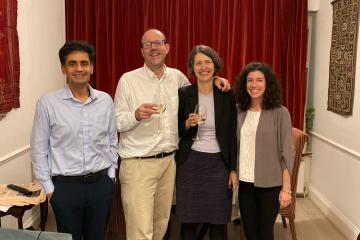
From evidence to policy: Three lessons for philanthropy from this year’s Nobel Prize

This article was originally published in The Center for Effective Philanthropy.
Abhijit Banerjee, Esther Duflo, and Michael Kremer recently won the 2019 Nobel Prize in Economics for their “experimental approach to alleviating global poverty.” But while attention has focused on their experimental methodologies, the policy action resulting from their research is equally significant. In fact, the award specifically mentions their work to fight poverty in practice, stating that “as a direct result of one of their studies, more than five million Indian children have benefited from effective programmes of remedial tutoring in schools. Another example is the heavy subsidies for preventive healthcare that have been introduced in many countries.”
The work of a generation of development economists in designing field experiments has cemented the role of randomized evaluations, or RCTs, as an incredibly important tool to understand which poverty alleviation programs work or not, and why. But what has set Banerjee and Duflo apart has been their recognition that the research they and their colleagues were producing would not by itself be sufficient to actually make a difference in the lives of millions. They recognized that concerted efforts would need to be made to turn the research into action.
This line of thinking sparked their founding of the Abdul Latif Jameel Poverty Action Lab (J-PAL), where we work, as an evidence-to-policy catalyst in 2003. Since the Nobel announcement in October, we and our colleagues at J-PAL keep getting asked about the key strategies that have played a major role in this movement. For philanthropists seeking to support and grow the practice of evidence-driven decision-making, here are three key lessons we’ve drawn from our work:
1) Provide core support for evidence-to-policy catalysts. Since its founding 16 years ago, J-PAL has moved beyond just research to conducting focused policy outreach and capacity building. We were able to do so thanks to the support of funders such as the Gates, Hewlett, and Arnold foundations; the Omidyar Network; and the U.K.’s Department for International Development. This support allowed us to open regional offices in South Asia, Europe, Latin America and the Caribbean, Africa, Southeast Asia, and North America, as well as a regional initiative in the Middle East and North Africa. It also allowed us to build a network of policy and training staff worldwide to augment research staff.
With this support to grow our regional presences around the world, J-PAL was able to develop a deep appreciation of local contexts, which has been instrumental in building credibility with governments, NGOs, and donors. It has also enabled us to help build the capacity of government officials and practitioners to understand and use evidence, namely through customized in-person trainings around the world and a suite of online courses hosted by MIT’s edX platform, which now reaches thousands of learners worldwide.
2) Ensure funds are easily accessible and predictable to attract interest in your priority areas. One of the key features of J-PAL is our initiative structure. Initiatives are funds that sit within specific regions or thematic areas at J-PAL to fund further research and policy partnerships. J-PAL currently has 12 active initiatives, which fund projects that aim to improve the outcomes of post-primary education, strengthen governance to reduce corruption, and increase access to digital finance, among other goals. Initiatives begin with conversations between donors, policy partners, and researchers to 1) identify key policy priorities, 2) determine gaps in existing evidence on how to address those challenges, and 3) then fund the design, pilot, evaluation, and scaling up of innovative solutions.
Having readily available funding and a predictable RFP cycle for the next few years crowds in new researchers and policy partners willing to invest in a long-term approach. It also allows them to quickly leverage short policy windows. Philanthropists may also find such initiatives particularly useful as they remove the need to have a large in-house operation to identify and assess policy priorities, issue RFPs, screen technical applications, or make and track sub-awards and deliverables.
3) Invest in cross-cutting initiatives with governments that go beyond sector boundaries. Even though they are not often the first choice for philanthropic support, governments offer incredible potential for reaching people at scale, enable access to critical information, set the rules for how philanthropists and NGOs interact with citizens, and play a key role in addressing challenges in sectors where NGOs are not currently present. Ultimately, smart, nimble, evidence-driven collaborations between philanthropy and governments — when done right — can be our best chance for having meaningful, lasting, and rapid impact.
As global poverty continues to affect hundreds of millions worldwide, solutions sometimes require looking beyond funding programs that neatly fall into thematic areas like education or health. Instead, institutional partnerships with governments can involve a variety of thematic areas, outcomes, and public services. A vital aspect of these partnerships is increasing both access to and smart use of administrative data. Taking advantage of the numerous benefits of administrative data can help governments and researchers better design, evaluate, and scale innovative programs to reduce poverty. Administrative data can also allow governments to monitor programs more effectively and build automated systems to ensure sustainability.
The way forward: How can philanthropists combine these tools to have an impact?
Philanthropists are in a unique position to leverage their networks and resources to create partnerships with evidence-to-policy catalysts and governments. With relatively small investments, these partnerships can have an outsized influence on development outcomes due to the reach of governments and the size of their budgets.
J-PAL is responding to this critical opportunity by launching two new cutting-edge initiatives: the Innovations in Government Initiative (IGI) and the Innovations in Data and Experiments for Action Initiative (IDEA). IGI works with governments to design, pilot, evaluate, and scale innovations. Meanwhile, IDEA supports governments, firms, and nonprofits to unlock their rapidly increasing administrative data; analyze it to improve decision-making; and partner with researchers in using this data to design, evaluate, and scale up innovative programs that will have the most impact on poverty.
By ensuring that evidence is used for decisions that are bigger and better, IGI and IDEA complement each other to enable more productive use of data in policy worldwide. These types of evidence-driven approaches, in fact, might result in the most effective investments of all by equipping the biggest players in development — governments and the largest NGOs — with the tools to generate, analyze, and use evidence. The ultimate goal is for these organizations to direct funding away from ineffective programs and toward policies that are seeing proven success in solving the biggest problems facing those living in poverty.
This year’s Nobel Prize in Economics is a recognition of the creativity and value of the methodology of randomized evaluations. But it is equally a recognition of how this methodology can be applied to improve the lives of millions of people worldwide, as investing in this infrastructure has allowed programs evaluated by J-PAL affiliates to scale up and reach 400 million people worldwide.
In her speech at the banquet celebrating the Nobel Prizes, Duflo concluded by saying, “There is a lot of work left to do against poverty, and we better get back to it.” We couldn’t agree more, and we hope to continue to build partnerships between nonprofits, governments, donors, and researchers to accelerate that journey.



